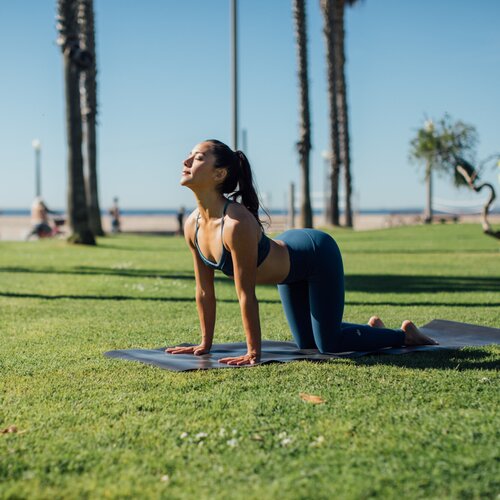
Modern yoga has changed dramatically over the last few decades, and some critics believe the change isn't a good one. Andrea Jain wrote an article for New York Times stating that yoga was largely used to achieve personal fitness and self-development as a result of capitalism, colonialism and other global developments. Yoga is now a part of many practitioners' daily routines, as they believe it can improve their physical appearance, strengthen and reduce stress.
The modernization of yoga can be compared to a rape or theft of the original tradition. It is easy to compare the rise of yoga to an invasion. While the practice has been popular for many years, there have been some disputes. Modern yoga can be seen as a sign of a larger problem. While yoga has seen a rise in popularity in recent decades, it still has its roots in an ancient tradition.

While the tradition of yoga dates back thousands of years, it is most popular in North America. Although there are many schools of yoga, they all share the same principles. Hatha yoga is the most popular type of yoga. While there are many types of yoga, the majority of practitioners practice it in a private environment. Hatha is the most common form of modern yoga. Although many things are not known about the origins of yoga, they are well-known.
The main differences between modern yoga and traditional yoga are often reflected in its historical context. Some yoga styles emphasize more physical exercise than spiritual practice. Others emphasize meditation, and focus on spiritual self-realization. Some styles can be both religious or secular. Others are more philosophical. Ultimately, a modern yoga practice is a mixture of the two. It's hard to choose the best style for you due to its diversity.
Ida C. Craddock in 1899 founded the Church of Yoga. This American social activist was the earliest modern yogi. She reconstructed the tantric mystico-erotic aspects of hatha yoga, and she viewed God as a third partner in marriage. She was charged with obscenities and spent three months behind bars in 1902. After the protest she hanged himself. Today, the practice of yoga is legal in most countries, but the earliest versions of the practice were banned in some states.

These traditions were the basis for modern yoga. It is said that yoga is good for all. The Shiva Samhita promises a beautiful body and the ability to attract opposite sexes. Yoga can improve the body according to the oldest Hindu texts. However, the texts do not mention whether yoga has any spiritual or physiological benefits. The early versions of Hindu and Christian Yoga are very different. They do share certain traits.
FAQ
What's a good workout routine for daily?
Regular exercise is essential to staying fit. It doesn't matter what type of fitness activity you choose as long as you do it regularly. The most important thing is consistency. If you want to achieve results, you must stick at it for an extended period.
Begin small daily activities like walking. You can gradually increase the amount of exercise you do until you have 30 minutes each day. You can choose to run, swim, weight train, do yoga or take aerobics classes.
It is important to exercise every day of the week. If you have a valid reason to skip a session, it is best not to.
Wear appropriate clothing and footwear when exercising outdoors. You should also consider the weather conditions that could affect your ability exercise safely.
When you exercise, make sure you are drinking plenty of water. Avoid drinking alcohol during this time because it can cause dehydration. Caffeinated beverages such as tea, coffee, and cola should be avoided. They may give you energy, but they will also dehydrate you.
You might feel tired when you start to exercise for the first time. If you stick with your training program, you'll feel more awake and alert.
What is a good 7-day workout schedule?
A seven-day exercise plan should include cardiovascular training (running/biking/swimming), strength exercises (using weight machines, free weights) and one flexibility/core program (yoga or Pilates). Each activity should be performed at least once each week. Each session should not last more than 45 minutes.
Cardiovascular Exercises: Running, biking, swimming
You should aim to get at least 60 mins of cardio exercise per week. You can aim for 75 minutes a week for best results. Cardio exercises can increase blood flow and stimulate the growth of muscles.
Strength Training
Cardio exercises target the heart, lungs and muscles. Strength training targets the muscles, tendons and bones. Strength training builds lean muscle mass, which helps burn calories even when resting.
Flexibility and core workouts
Flexibility and core workouts are great ways to strengthen your entire body. Yoga and Pilates are both excellent choices.
Do Men Need A Gym Membership?
Men do not need a gym membership. If you sign up for a gym, however, your money will be much more valuable.
Many gyms offer free trial memberships that allow you to test the facilities before signing up for any monthly fees.
You can use our gym anytime you like and it's free. Your membership can be cancelled at any time you choose to love it or not.
Statistics
- Candidates and applicants must pass all four tests at 70% (minimum level) to graduate from Basic Deputy U.S. Marshal (BDUSM) Training. (usmarshals.gov)
- Are You One of the 20% of Guys (mh.co.za)
- According to the American Academy of Dermatology (AAD), men over 50 are at a heightened risk of developing it. (healthline.com)
- Get free shipping and 25% off today. (healthline.com)
- According to the American Heart Association, blood pressure should be checked at least once every two years, beginning at age 20. (my.clevelandclinic.org)
External Links
How To
How can I exercise to burn fat?
Exercise burns calories through increased metabolism and oxygen consumption.
You'll lose weight safely if you exercise at moderate intensity.
These tips will help you burn fat and keep fit while exercising.
-
Cardio exercises like walking, running (or jogging), swimming, cycling, running, and/or elliptical training are all good options.
-
For 30 minutes, do it three times a week.
-
You can add strength training into your exercise routine if you're looking to lose even more weight.
-
Avoid intense workouts. You can build muscle without breaking down muscle tissue.
-
When exercising, make sure to drink lots of water. Water flushes out toxins, and keeps your body properly hydrated.
-
After exercising, consume low-fat protein smoothies. Protein shakes help repair muscles and boosts energy.
-
So you don’t feel hungry, eat smaller meals throughout your day.
-
Don't skip breakfast! You can feel tired and slow if you skip breakfast.
-
Take care of your mental health. Stressful situations can slow down metabolism.
-
Keep a positive attitude. Studies show that people who believe they're overweight gain more weight than those who think they look pleasing.
-
Get enough sleep. A lack of sleep makes it difficult to lose fat.
-
Stay active. Make sure you get up and move every hour.
-
Maintain a healthy diet. You will feel fuller longer if you eat right.
-
Find relaxation techniques. Your body won't release stress hormones that cause muscle tissue destruction if you have a tense mind.
A balanced diet contains all necessary nutrients for growth and development.
Six small meals per day is better than three large meals. This gives your body time and energy to process the food.
For strong bones, we need 500 mgs of calcium daily. Calcium can also be found in milk products, yogurt, fortified Soy beverages, orange Juice, cereals and bread.
Calcium is found in leafy vegetables, beans and tofu, as well nuts, seeds and cheese.
Vitamin D is required for calcium absorption. Vitamin D can also be found in some fortified foods such as eggs, fish, and yolk.
Vitamin E is essential for skin health. Vitamin E can be found in vegetable oils as well as wheat germ oil, peanuts and almonds.
Zinc is essential for healthy immunity and wound healing. Zinc can be found as a mineral in oysters.
Zinc deficiency may cause fatigue, loss appetite, depression, and impaired immunity.
Insulin resistance is caused by eating too much sugar, which can increase blood glucose levels. Insulin resistance is linked to weight gain.
Insulin resistance develops when there are high levels of free radicals in the bloodstream. Free radicals can be molecules with unpaired electrons that cause damage to cell membranes.
Free radicals come mainly from food additives, pesticides, herbicides, preservatives, smoking, air pollution, radiation, chemicals in cosmetics, lotions, and household cleaning supplies.
Free radical damage can lead to cancer, heart disease, diabetes, arthritis, asthma, and aging.
The best way to avoid free radicals is to eat a balanced diet high in antioxidants. Antioxidants protect against oxidative damage.
Vitamin C (found on citrus fruits), Beta carotene, found in carrots and sweet potatoes, spinach and broccoli, cantaloupe (found in tomatoes, mangoes and peppers), and Vitamin E (found nuts, olive oil and avocados).
Selenium, copper and manganese are all antioxidant nutrients.
Selenium protects cells against oxidative damage from free radicals. Selenium may be found in Brazil nuts as well tuna, liver and kidneys. It can also be found on shrimp, cod, turkey, beef lamb, pork, chicken, and other foods.
Copper protects the eyes, brain, lungs, liver, and red blood cells. Copper is also found in poultry, meat, and organs.
Manganese plays an important role in bone structure. Manganese may be found in brown rice or spinach, bananas and prunes as well raisins, oatmeal and lentils.
Zinc is required for normal growth, reproduction and wound healing. Zn is found in lean cuts of meat, white fish, poultry, and eggs.